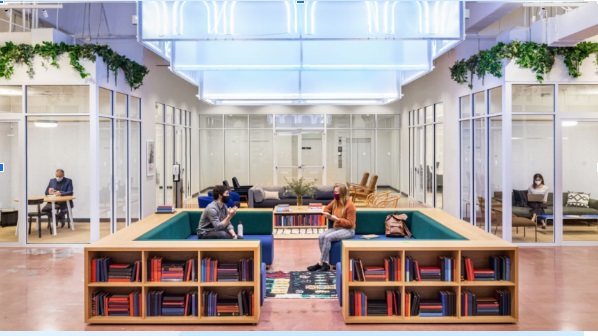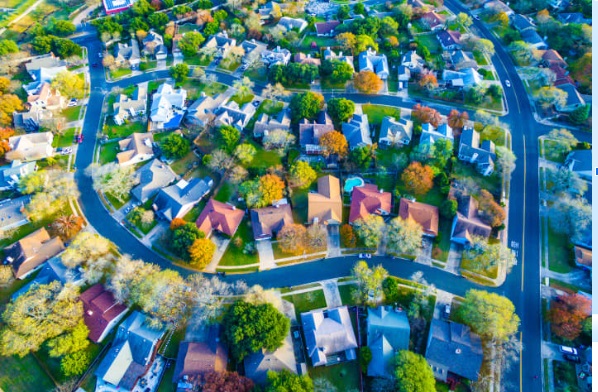 Opportunity Zones are designated economically distressed areas in the United States that offer tax incentives to encourage private investment and spur economic growth. Established as part of the Tax Cuts and Jobs Act of 2017, these zones have garnered significant attention from investors, developers, and policymakers alike.
Opportunity Zones are designated economically distressed areas in the United States that offer tax incentives to encourage private investment and spur economic growth. Established as part of the Tax Cuts and Jobs Act of 2017, these zones have garnered significant attention from investors, developers, and policymakers alike.
What are Opportunity Zones?
Opportunity Zones are selected by each state’s governor based on criteria provided by the U.S. Treasury Department. These zones are typically located in areas with lower income levels and in need of revitalization.
Tax Incentives for Investors
Investors who put their capital gains from other investments into Qualified Opportunity Funds (QOFs), which are investment vehicles that focus on projects within Opportunity Zones, can benefit from several tax incentives:
- Capital Gains Tax Deferral: Investors can defer taxes on their eligible capital gains by reinvesting those gains into a QOF within 180 days of the sale or exchange that generated the gains.
- Temporary Reduction in Taxable Gains: If investors hold their investment in the QOF for at least five years, they can receive a 10% reduction in the amount of the deferred gain that is taxable. If held for at least seven years, they can receive an additional 5% reduction, totaling a 15% reduction.
- Tax-Free Gains on QOF Investments: If investors hold their investment in the QOF for at least ten years, any capital gains generated from the QOF investment are exempt from federal capital gains taxes when they sell their interest in the QOF.
Eligible Investments and Community Impact
Qualified Opportunity Funds can invest in various types of projects within the Opportunity Zone, including real estate development, businesses, and infrastructure. The goal is to promote economic development, job creation, and community improvement in these areas. For example, a real estate developer might build an affordable housing complex in an Opportunity Zone, using a QOF to attract capital from investors seeking tax benefits. This investment can address community needs and contribute to the area’s revitalization.
Considerations for Investors
While the tax benefits associated with Opportunity Zones are attractive, investors should:
- Carefully consider their individual financial situation.
- Consult with tax professionals.
- Conduct thorough due diligence on specific investment opportunities within Opportunity Zones.
The program’s regulations and rules may change over time, so staying informed about the latest developments is crucial.
Conclusion
Opportunity Zones offer investors the potential for tax-advantaged returns while contributing to the economic and social development of disadvantaged communities. By understanding the key aspects of this program, investors can make informed decisions and explore ways to incorporate Opportunity Zone investments into their overall strategies.
FAQs
- How do Opportunity Zones provide tax incentives for investors? Investors can defer capital gains taxes until 2027 by reinvesting gains into an Opportunity Fund. They receive a 10% basis step-up for investments held for at least 5 years and 15% for those held for at least 7 years. Additionally, capital gains on the appreciation of Opportunity Fund investments held for at least 10 years can be permanently excluded from taxes.
- What are the capital gains tax benefits of investing in Opportunity Zones?
Investors can defer capital gains taxes until 2027, receive a 10% basis step-up for investments held for at least 5 years, and a 15% basis step-up for those held for at least 7 years. They can also permanently exclude capital gains taxes on appreciation if the investment is held for at least 10 years. - How do Opportunity Zone investments defer capital gains taxes?
By reinvesting eligible capital gains into an Opportunity Fund, investors can defer capital gains taxes on the original investment until 2026 or until the Opportunity Fund investment is sold. Holding the investment for at least 5 or 7 years extends the deferral period and provides a basis step-up.
Read More – Multifamily Real Estate vs. Other Asset Classes
As the world evolves, so does the real estate landscape, particularly in the multifamily sector. In 2024, various trends reshape how developers, investors, and residents perceive and engage with multifamily properties. From technological advancements to shifting demographics, here are five emerging trends in multifamily real estate for 2024.
Sustainable Living Spaces:

With a growing focus on environmental sustainability, multifamily properties are adapting to incorporate eco-friendly features and practices. Developers are increasingly integrating renewable energy sources such as solar panels, implementing energy-efficient appliances, and incorporating green spaces within communities. Additionally, initiatives like water conservation measures and waste reduction strategies are becoming standard in multifamily developments. Sustainable living spaces appeal to environmentally conscious tenants and contribute to cost savings and long-term value for property owners.
Smart Building Technologies:

Advancements in technology are revolutionizing multifamily real estate with the integration of smart building technologies. From smart thermostats and automated lighting systems to keyless entry and remote property management platforms, these technologies enhance convenience, security, and efficiency for residents and property managers. IoT (Internet of Things) devices enable real-time monitoring and control of various building systems, optimizing resource usage and improving overall tenant experience. As the demand for connected living spaces grows, expect widespread adoption of smart building solutions across multifamily properties in 2024 and beyond.
Flexibility in Design and Amenities:

The preferences and lifestyles of renters are evolving, driving the need for greater flexibility in multifamily property design and amenities. Developers focus on creating versatile living spaces that accommodate diverse tenant demographics and changing needs. This includes flexible floor plans that easily adapt to different living arrangements, such as co-living or multigenerational housing setups. Additionally, communal amenities like coworking spaces, fitness centers, and pet-friendly facilities are gaining popularity as tenants prioritize convenience and social connectivity. By offering a mix of amenities and flexible living options, multifamily properties can attract a wider range of tenants and foster a sense of community.
Rise of Urban Suburbs:

Urban suburbs are gaining traction as more people seek the benefits of suburban living without sacrificing urban conveniences. These mixed-use developments combine elements of both urban and suburban environments, offering walkable neighborhoods with access to retail, dining, and entertainment options. With the rise of remote work and flexible schedules, urban suburbs provide an attractive alternative for renters looking to balance city living and suburban tranquility. Multifamily developers are capitalizing on this trend by investing in suburban markets with strong job growth and transportation infrastructure, creating vibrant communities that cater to modern urban dwellers.
Emphasis on Health and Wellness:

The COVID-19 pandemic has heightened awareness of health and wellness concerns, prompting multifamily properties to prioritize resident safety and well-being. In 2024, expect to see an increased focus on health-centric design features and amenities, such as air purification systems, outdoor recreation areas, and wellness programming. Properties that promote physical and mental well-being will appeal to health-conscious tenants seeking a holistic living experience. Additionally, integrating telehealth services and fitness technology platforms allows residents to prioritize their health from the comfort of their homes. By prioritizing health and wellness initiatives, multifamily properties can differentiate themselves in a competitive market and attract discerning renters.
Conclusion:
The multifamily real estate landscape is evolving rapidly, driven by technological innovations, demographic shifts, and changing consumer preferences. In 2024, sustainability, technology, flexibility, urban suburbs, and health and wellness will emerge as key trends shaping the future of multifamily properties. By embracing these trends, developers and investors can capitalize on opportunities to create innovative, resilient communities that meet the evolving needs of tenants in the years to come.
